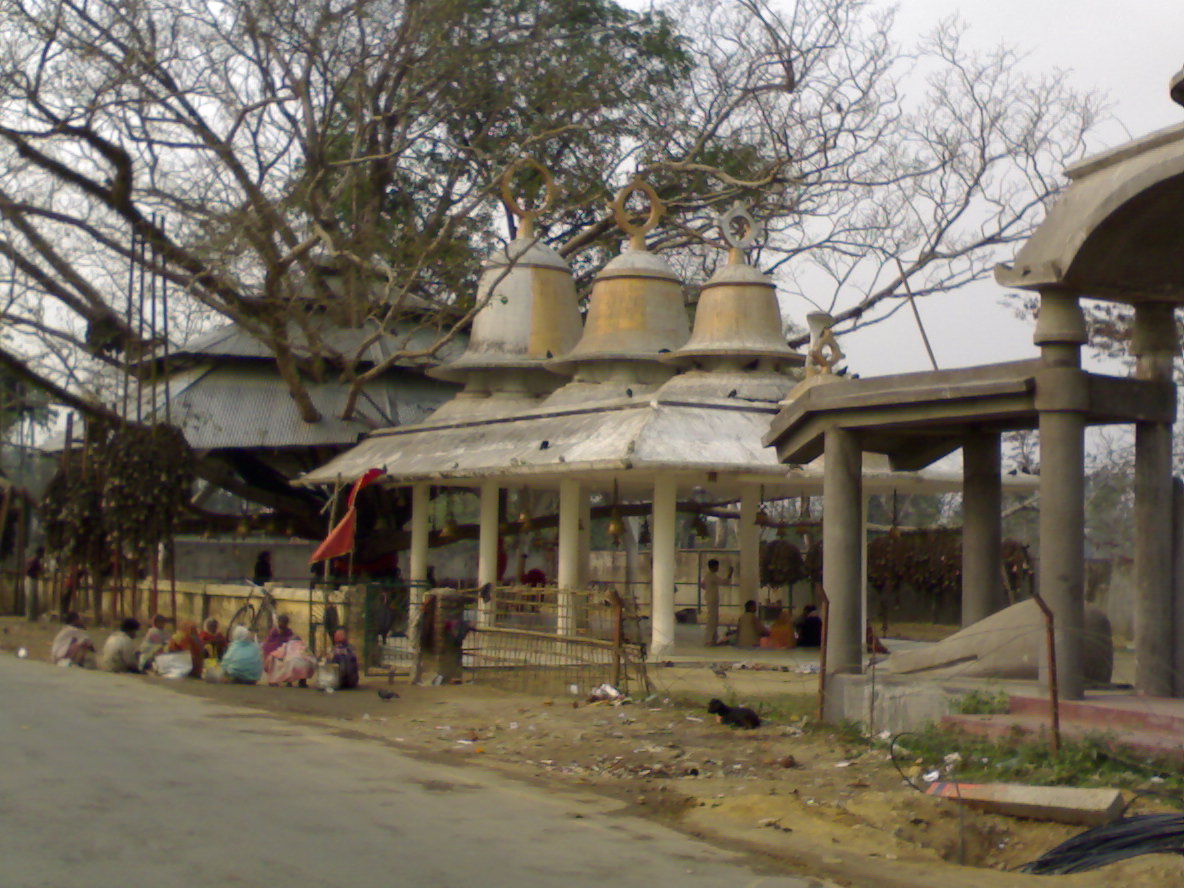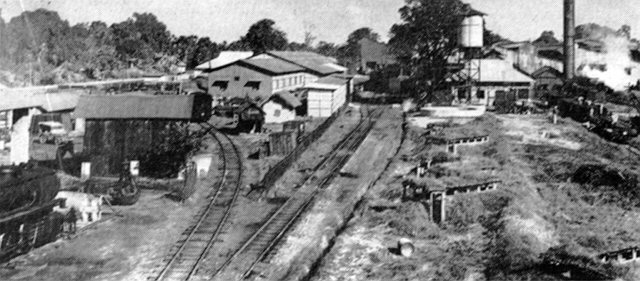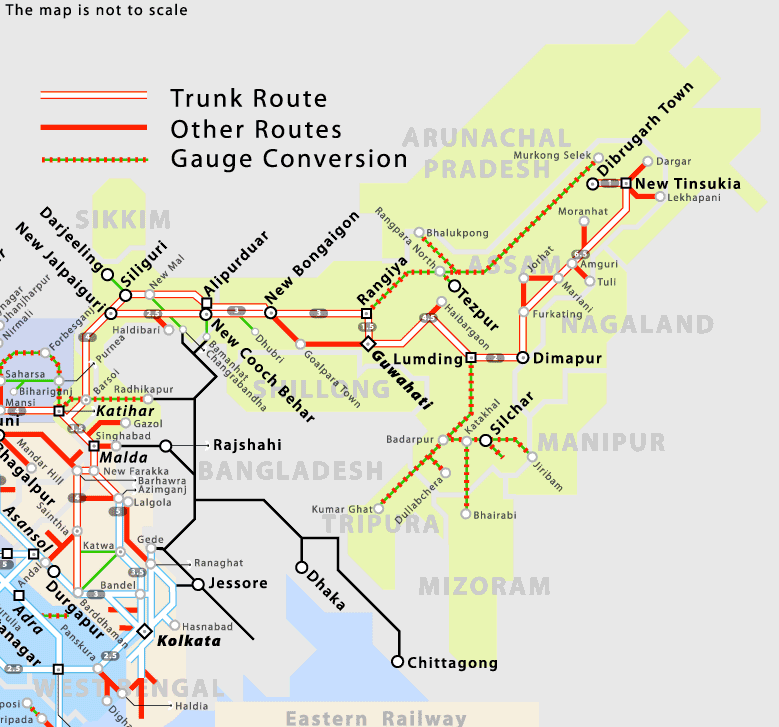|
Makum Railway Station
Makum is a railway junction station on the Lumding–Dibrugarh section. It is located in Tinsukia district in the Indian state of Assam. It serves Makum and the surrounding areas. History The -wide metre-gauge line from Dibrugarh steamer ghat to Makum was opened to passenger traffic on 16 July 1883.''Urban History of India: A Case-Study'' by Deepali Barua, pages 79-80, , Mittal Publications, A-110 Mohan Garden, New Delhi – 110059 The metre-gauge railway track earlier laid by Assam Bengal Railway from Chittagong to Lumding was extended to Tinsukia on the Dibru–Sadiya line in 1903. Conversion of the Lumding–Dibrugarh section from metre gauge to broad gauge was completed by the end of 1997. References External links * Railway junction stations in India Railway stations in Tinsukia district Tinsukia railway division {{Assam-railstation-stub ... [...More Info...] [...Related Items...] OR: [Wikipedia] [Google] [Baidu] |
Indian Railways
Indian Railways (IR) is a statutory body under the ownership of Ministry of Railways, Government of India that operates India's national railway system. It manages the fourth largest national railway system in the world by size, with a total route length of . or 83% of all the broad-gauge routes are electrified with 25 kV 50 Hz AC electric traction . In 2020, Indian Railways carried 808.6 crore (8.086 billion) passengers and in 2022, Railways transported 1418.1 million tonnes of freight. It runs 13,169 passenger trains daily, on both long-distance and suburban routes, covering 7,325 stations across India. Mail or Express trains, the most common types of trains, run at an average speed of . Suburban EMUs run at an average speed of . Ordinary passenger trains (incl. mixed) run at an average speed of . The maximum speed of passenger trains varies, with the Vande Bharat Express running at a peak speed of . In the freight segment, IR runs 8,479 trains daily. The a ... [...More Info...] [...Related Items...] OR: [Wikipedia] [Google] [Baidu] |
Junction Station
''Junction station'' usually refers to a railway station situated on or close to a junction where lines to several destinations diverge. The usual minimum is three incoming lines. At a station with platforms running from left to right, the minimum to qualify as a junction station would usually be one line on the left and two on the right (or vice versa). This is not to be confused with a station where there is one through line, but single track on one side while double track on the other. In this case, all trains passing through the station can reach only one destination as their next station. Commonly, junction stations have multiple platform faces to enable trains for multiple destinations to stand at the station at the same time, but this is not necessary. There are many stations with the word 'junction' in their title, such as those below: In Australia * Bondi Junction railway station *Eagle Junction railway station In Canada *Hervey-Jonction railway station *Sudbury Juncti ... [...More Info...] [...Related Items...] OR: [Wikipedia] [Google] [Baidu] |
Makum
Makum (IPA: mɑːkəm) is a town and a town area committee in Tinsukia district in the Indian state of Assam. It should not be mistaken for Makum Pathar (the place near Digboi where, crude oil was first struck in Asia). It is the meeting point of three premier towns of upper Assam namely Tinsukia Digboi and Doomdooma. The National Highway-37 and National Highway-38 meet at Makum. Makum railway station is the easternmost railway junction of the Indian Railways. The rail line became operational on 16 July 1883. It falls under the Dibrugarh (Lok Sabha constituency) and under the Digboi legislative assembly. Location It is located around 7 km east of Tinsukia town. It is well connected with all the major surrounding places by roads and railways. Passenger auto rickshaws for around 16 hours a day from Makum to Tinsukia and from Makum to Doomdooma. The Tata Magic service from Doomdooma to Tinsukia also benefits Makum. Geography Makum is located at . It has an average elevation ... [...More Info...] [...Related Items...] OR: [Wikipedia] [Google] [Baidu] |
Tinsukia District
Tinsukia district () is one of the 34 administrative districts in the state of Assam, India. The district headquarters is located at Tinsukia city. The district occupies an area of 3790 km2. Towns *Digboi *Doom Dooma, Doomdooma *Jagun *Kakopathar *Lido Town *Makum *Margherita *Sadiya *Tinsukia History The area of the present district was an integral part of the Chutiya kingdom during the medieval period. After the defeat of the Chutias, the Ahoms placed ''Sadiya-khowa gohain'' to rule the region. Later, the Matak rajya, Matak kingdom rose in its place after the Moamoria rebellion. The older name of Tinsukia city was ''Bengmara''. It was later made the capital of the Motok Kingdom when a member of the former Chutiya kingdom, Chutia royal family named Sarbananada Singha established his capital at Rangagarh situated in the bank of river Guijan. In 1791 AD, he transferred his capital to the city of Bengmara. Bengmara was built by King Sarbananda Singha with the help of his Min ... [...More Info...] [...Related Items...] OR: [Wikipedia] [Google] [Baidu] |
Assam
Assam (; ) is a state in northeastern India, south of the eastern Himalayas along the Brahmaputra and Barak River valleys. Assam covers an area of . The state is bordered by Bhutan and Arunachal Pradesh to the north; Nagaland and Manipur to the east; Meghalaya, Tripura, Mizoram and Bangladesh to the south; and West Bengal to the west via the Siliguri Corridor, a wide strip of land that connects the state to the rest of India. Assamese and Boro are the official languages of Assam, while Bengali is an additional official language in the Barak Valley. Assam is known for Assam tea and Assam silk. The state was the first site for oil drilling in Asia. Assam is home to the one-horned Indian rhinoceros, along with the wild water buffalo, pygmy hog, tiger and various species of Asiatic birds, and provides one of the last wild habitats for the Asian elephant. The Assamese economy is aided by wildlife tourism to Kaziranga National Park and Manas National Park, which are ... [...More Info...] [...Related Items...] OR: [Wikipedia] [Google] [Baidu] |
Lumding–Dibrugarh Section
The Lumding–Dibrugarh section is a broad-gauge railway line connecting and . The -long railway line is functional in the Indian state of Assam. It is under the jurisdiction of Northeast Frontier Railway. History The Assam Railway and Trading Company Limited was incorporated in 1881. The first metre-gauge locomotive was put into service in Assam in 1882. The -long line from Dibrugarh steamer ghat to Makum was opened to passenger traffic on 16 July 1883. The objective of opening an isolated railway in upper Assam was to link the tea gardens and coalfields to the steamer ghats. In the latter part of the 19th century, the Dibru–Sadiya railway was long.''Urban History of India: A Case-Study'' by Deepali Barua, pages 79-80, , Mittal Publications, A-110 Mohan Garden, New Delhi – 110059 The -wide metre-gauge railway track earlier laid by Assam Bengal Railway from Chittagong to Lumding was extended to Tinsukia on the Dibru–Sadiya line in 1903. The Mariani–Furkating line wa ... [...More Info...] [...Related Items...] OR: [Wikipedia] [Google] [Baidu] |
Northeast Frontier Railway Zone
The Northeast Frontier Railway (abbreviated NFR) is one of the Zones and divisions of Indian Railways, 19 railway zones of the Indian Railways. It is headquartered in Maligaon, Guwahati in the state of Assam, and responsible for operation and expansion of rail network all across Northeast India, Northeastern states and some districts of eastern Bihar and northern West Bengal. Divisions Northeast Frontier Railway is divided into 5 divisions: * Katihar railway division * Alipurduar railway division * Lumding railway division * Rangiya railway division * Tinsukia railway division Each of these divisions is headed by a Divisional Railway Manager, a Senior Administrative Grade officer of the rank of Joint Secretary to Government of India. The departmental setup at headquarters level and divisional setup in the field assists the General Manager in running the railways. Various departments namely engineering, mechanical, electrical, signal & telecom, operations, commercial, safety, acc ... [...More Info...] [...Related Items...] OR: [Wikipedia] [Google] [Baidu] |
Tinsukia District
Tinsukia district () is one of the 34 administrative districts in the state of Assam, India. The district headquarters is located at Tinsukia city. The district occupies an area of 3790 km2. Towns *Digboi *Doom Dooma, Doomdooma *Jagun *Kakopathar *Lido Town *Makum *Margherita *Sadiya *Tinsukia History The area of the present district was an integral part of the Chutiya kingdom during the medieval period. After the defeat of the Chutias, the Ahoms placed ''Sadiya-khowa gohain'' to rule the region. Later, the Matak rajya, Matak kingdom rose in its place after the Moamoria rebellion. The older name of Tinsukia city was ''Bengmara''. It was later made the capital of the Motok Kingdom when a member of the former Chutiya kingdom, Chutia royal family named Sarbananada Singha established his capital at Rangagarh situated in the bank of river Guijan. In 1791 AD, he transferred his capital to the city of Bengmara. Bengmara was built by King Sarbananda Singha with the help of his Min ... [...More Info...] [...Related Items...] OR: [Wikipedia] [Google] [Baidu] |
Metre-gauge
Metre-gauge railways are narrow-gauge railways with track gauge of or 1 metre. The metre gauge is used in around of tracks around the world. It was used by European colonial powers, such as the French, British and German Empires. In Europe, large metre-gauge networks remain in use in Switzerland, Spain and many European towns with urban trams, but most metre-gauge local railways in France, Germany and Belgium closed down in the mid-20th century, although many still remain. With the revival of urban rail transport, metre-gauge light metros were established in some cities, and in other cities, metre gauge was replaced by standard gauge. The slightly-wider gauge is used in Sofia. Examples of metre-gauge See also * Italian metre gauge * Narrow-gauge railways A narrow-gauge railway (narrow-gauge railroad in the US) is a railway with a track gauge narrower than standard . Most narrow-gauge railways are between and . Since narrow-gauge railways are usually built with ... [...More Info...] [...Related Items...] OR: [Wikipedia] [Google] [Baidu] |
Assam Bengal Railway
The Assam Bengal Railway (ABR) was one of the pioneering railway companies in British India. Headquartered in Chittagong, it functioned from 1892 to 1942. History Assam Bengal Railway was incorporated in 1892 to serve British-owned tea plantations in Assam. Assam Bengal Railway started construction of a railway track on the eastern side of Bengal in 1891. A track between Chittagong and Comilla was opened to traffic in 1895. The Comilla-Akhaura-Kulaura-Badarpur section was opened in 1896–1898 and finally extended to Lumding in 1903. The Assam Bengal Railway constructed a branch line to Guwahati, connecting the city to the eastern line in 1900. The line was extended to Tinsukia in 1902 and it was also connected to Dibru-Sadiya Railway in 1903. In 1936, the company owned 205 locomotives, 588 coaches and 5922 goods wagons. On 1 January 1942 the Assam Bengal Railway combined with the Eastern Bengal Railway to form the Bengal and Assam Railway. [...More Info...] [...Related Items...] OR: [Wikipedia] [Google] [Baidu] |
Broad Gauge
A broad-gauge railway is a railway with a track gauge (the distance between the rails) broader than the used by standard-gauge railways. Broad gauge of , commonly known as Russian gauge, is the dominant track gauge in former Soviet Union (CIS states, Baltic states, Georgia and Ukraine), Mongolia and Finland. Broad gauge of , commonly known as Irish Gauge, is the dominant track gauge in Ireland, and the Australian states of Victoria and Adelaide. Broad gauge of , commonly known as Iberian gauge, is the dominant track gauge in Spain and Portugal. Broad gauge of , commonly known as Indian gauge, is the dominant track gauge in India, Pakistan, Bangladesh, Sri Lanka, Argentina, Chile, and on BART (Bay Area Rapid Transit) in the San Francisco Bay Area. This is the widest gauge in common use anywhere in the world. It is possible for trains on both Iberian gauge and Indian gauge to travel on each other's tracks with no modifications in the vast majority of cases. History In Gr ... [...More Info...] [...Related Items...] OR: [Wikipedia] [Google] [Baidu] |





.jpg)
